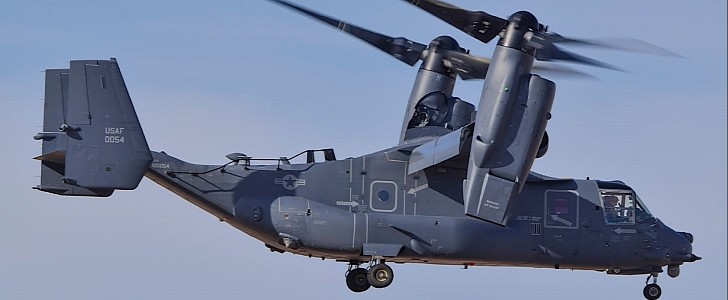With the eyes of the military firmly fixed on other tiltrotor aircraft currently being developed, one would have thought the existing V-22 Osprey is kind of on its way out the door. But that’s hardly the case, given how this incredible machine is only a little over 30 years old.
In December 2020, the Naval Air Systems Command (NAVAIR) announced it awarded Bell Boeing, which is in charge of making the bird, an $81 million contract to upgrade the nacelles on the Special Operation Forces variant of the Osprey, the CV-22.
It took the military almost a year to deliver the first of them at Bell’s Amarillo Assembly Center, and close to three months for the company to complete the modifications.
What those modifications are is not exactly public knowledge, but we are being told the main targets of the operation are improving “the wiring components within the nacelles and to change the structure” with the goal of giving it more “reliability and maintainability.” In all, some 1,300 new parts are used for the improvements being made.
“The capabilities of the V-22 today are unmatched,” said in a statement Shane Openshaw, V-22 deputy director and Boeing vice president. “These nacelle upgrades help ensure the Osprey remains a highly capable and reliable aircraft supporting our customers’ missions for many years to come.”
This week, Bell announced the completion of the first CV-22 with improved nacelles, which was delivered to the 20th Special Operations Squadron at Cannon Air Force Base in New Mexico back in December.
At the time of writing, the company is already working on the second CV-22, and by the middle of the decade, entire fleet should be upgraded.
The CV-22 is powered by a couple of Rolls-Royce Liberty engines, that develop 6,200 shaft horsepower each. It can travel at speeds of up to 322 mph (518 kph) and altitudes of up to 25,000 feet (7,620 meters) and can operate both as a helicopter, and as an airplane.
It took the military almost a year to deliver the first of them at Bell’s Amarillo Assembly Center, and close to three months for the company to complete the modifications.
What those modifications are is not exactly public knowledge, but we are being told the main targets of the operation are improving “the wiring components within the nacelles and to change the structure” with the goal of giving it more “reliability and maintainability.” In all, some 1,300 new parts are used for the improvements being made.
“The capabilities of the V-22 today are unmatched,” said in a statement Shane Openshaw, V-22 deputy director and Boeing vice president. “These nacelle upgrades help ensure the Osprey remains a highly capable and reliable aircraft supporting our customers’ missions for many years to come.”
This week, Bell announced the completion of the first CV-22 with improved nacelles, which was delivered to the 20th Special Operations Squadron at Cannon Air Force Base in New Mexico back in December.
At the time of writing, the company is already working on the second CV-22, and by the middle of the decade, entire fleet should be upgraded.
The CV-22 is powered by a couple of Rolls-Royce Liberty engines, that develop 6,200 shaft horsepower each. It can travel at speeds of up to 322 mph (518 kph) and altitudes of up to 25,000 feet (7,620 meters) and can operate both as a helicopter, and as an airplane.










